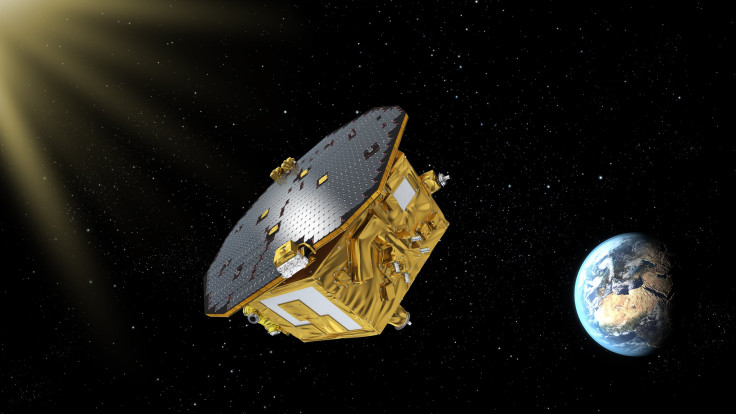Successful LISA Pathfinder Test Paves Way For Detection Of Gravitational Waves In Space

Earlier this year, scientists at the Laser Interferometer Gravitational-Wave Observatory (LIGO) facilities in Washington state and Louisiana announced that they had discovered ripples in the fabric of space-time, also known as gravitational waves. This discovery — the first of its kind — triggered enormous excitement among scientists, who saw it as a step toward the eventual creation of a “gravitational map” of the universe that would enable us to study celestial objects and events that would otherwise remain hidden from view.
Now, just four months after the discovery, researchers from the European Space Agency (ESA) have achieved another breakthrough — one that demonstrates the technology needed to build a space-based observatory that would hunt for gravitational waves far removed from any ground-based interference.
On Tuesday, in a study published in the Physical Review Letters, researchers working on the Laser Interferometer Space Antenna (LISA) Pathfinder mission — which was sent into orbit to test elements of the laser measurement system that would be used in a future gravitational wave observatory — stated that they had exceeded the performance objectives of the mission. The satellite, which was launched in December, successfully created the closest thing to free fall ever observed in a human-made object.
“LISA Pathfinder was always intended as a stepping stone to the level of performance needed for a full-scale gravitational wave observatory, but these results tell us we’ve nearly made the full jump. A full-scale observatory with LISA Pathfinder’s performance would achieve essentially all of the ultimate science goals,” Ira Thorpe, a team member at NASA's Goddard Space Flight Center in Greenbelt, Maryland, said in a statement. “That's amazing in itself, and data from this mission will help us build on an already impressive foundation.”
Gravitational waves are ripples in the fabric of reality itself. Albert Einstein’s general theory of relativity, which posits that gravity warps the fabric of cosmos, also tells us that violent events such as the collision of massive objects like black holes and neutron stars create ripples in the curvature of space-time.
However, detection of these waves is an extremely hard task, as, in the cosmic scale of things, they are miniscule. The LIGO collaboration successfully detected them in February by bouncing lasers along two installations located roughly 1,800 miles apart and looking for slight change in phase — a telltale sign of space-time being warped. Having two detectors is a way to sift out terrestrial disturbances, such as traffic and earthquakes, from the faint ripples of space itself.
That is why, as a precursor to the successful installation of a gravitational wave detector in space, scientists needed to reduce non-gravitational forces as much as humanly possible.
This is where the LISA Pathfinder mission comes in. The mission is equipped with an identical pair of 1.8-inch cubes made of a gold-platinum alloy — a material chosen for its high density and insensitivity to magnetic fields. Once in orbit, these “test masses” were unclamped and allowed to go into free fall while a high-resolution laser interferometer measured their positions.
“The measurements have exceeded our most optimistic expectations,” Paul McNamara, the LISA Pathfinder project scientist at ESA's Directorate of Science, said in the statement. “We reached the level of precision originally required for LISA Pathfinder within the first day, and so we spent the following weeks improving the results a factor of five better.”
When the ESA launches the LISA observatory in 2034, it would consist of three spacecraft arranged in a triangle, with each one carrying free-falling test masses in its heart. Lasers will then be used to detect any slight perturbations in the distance between these masses caused by passing gravitational waves.
© Copyright IBTimes 2024. All rights reserved.





















